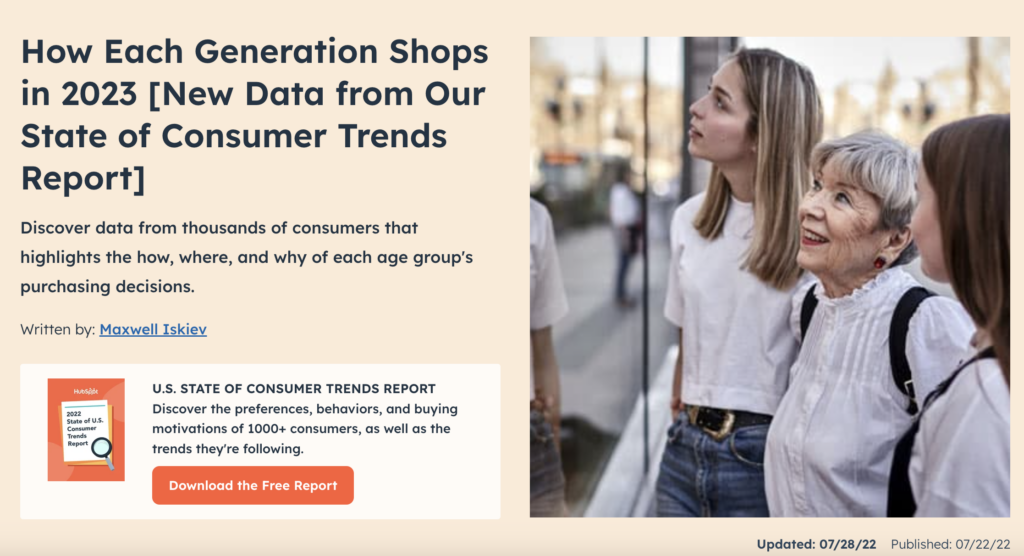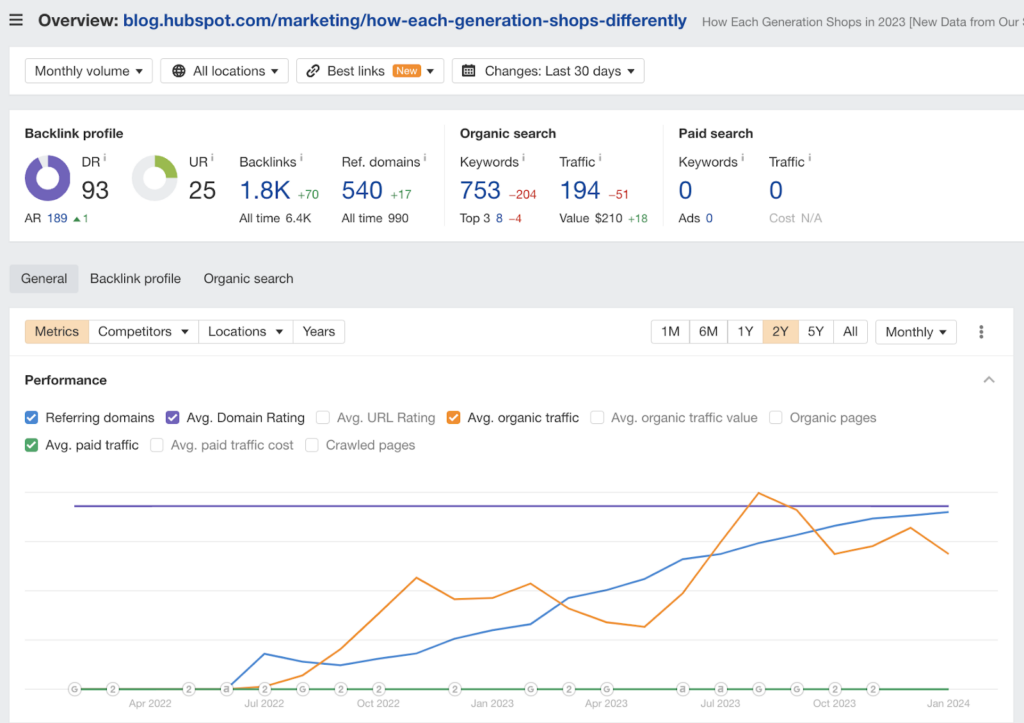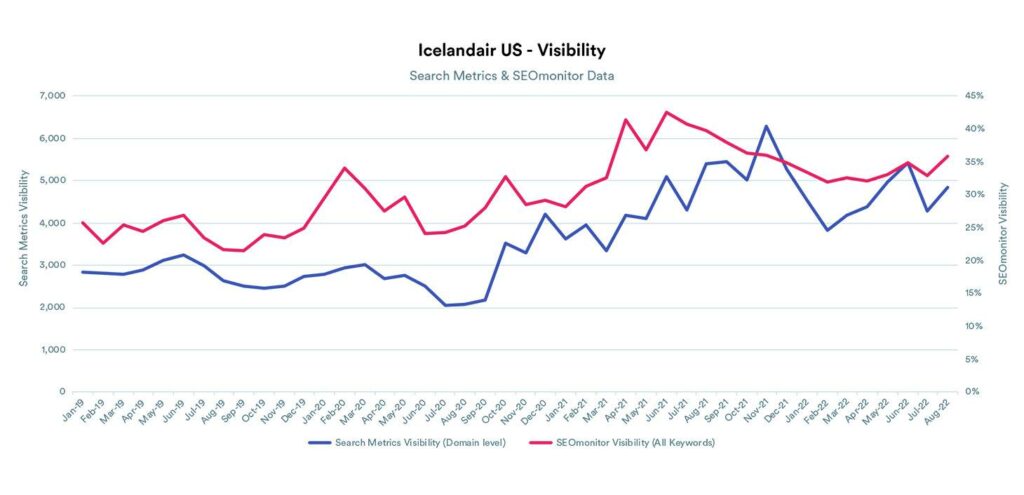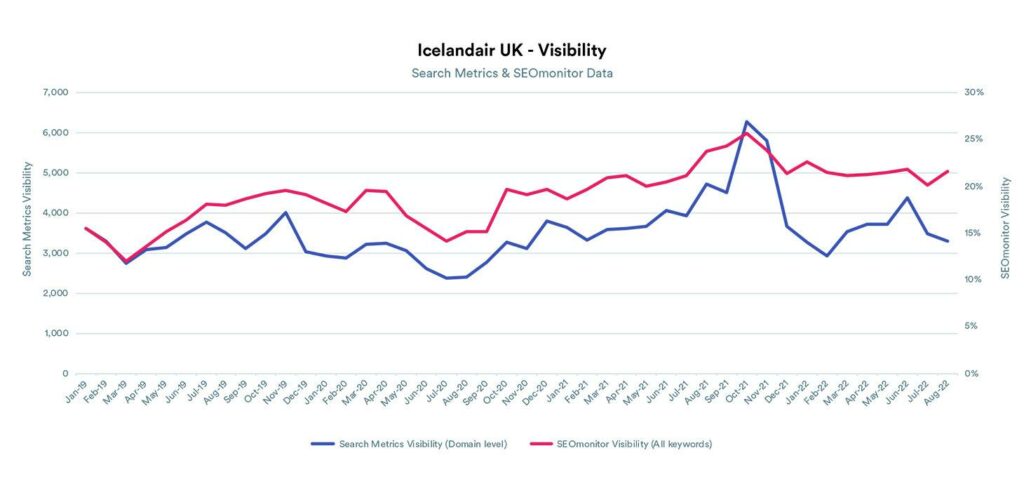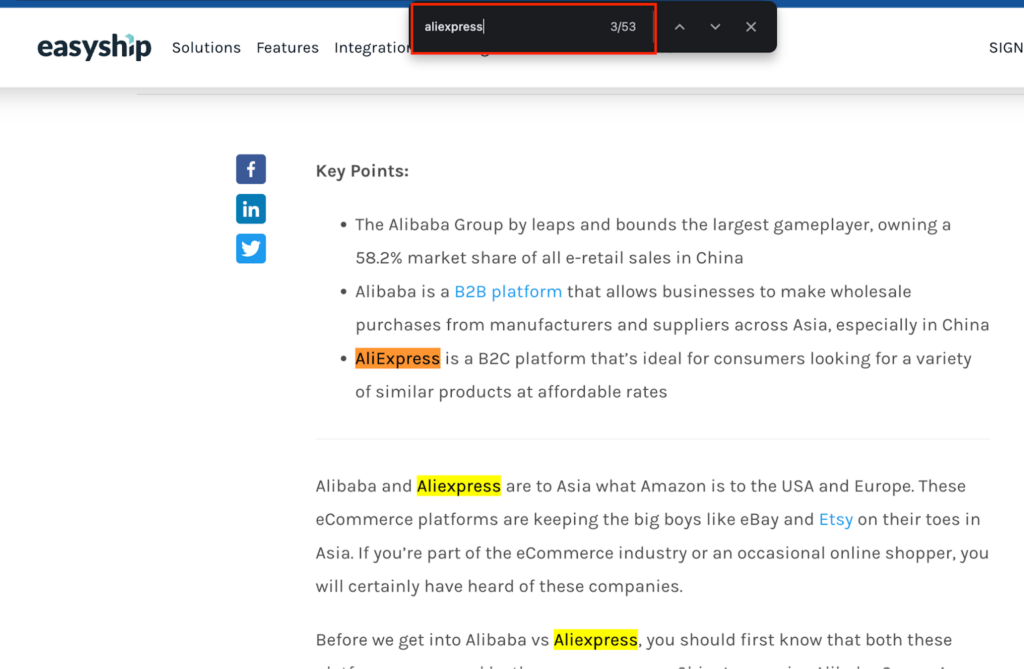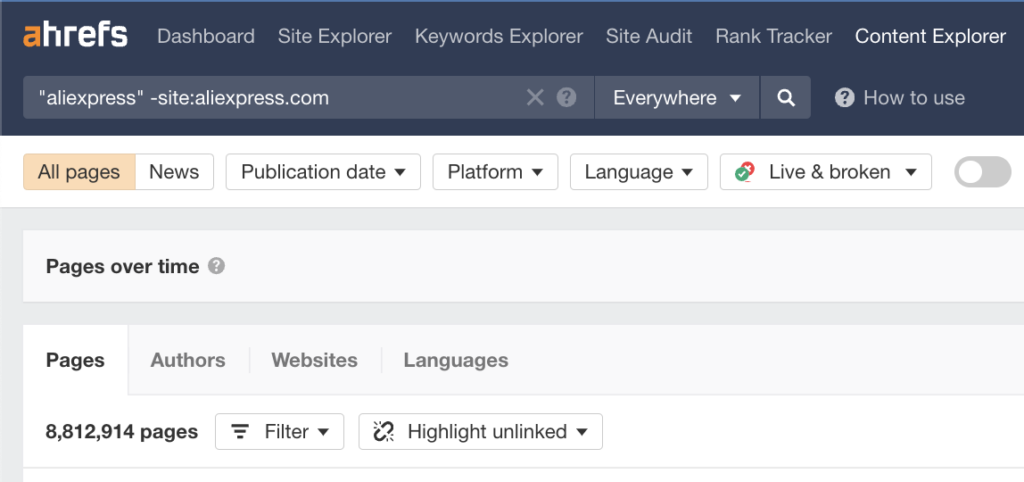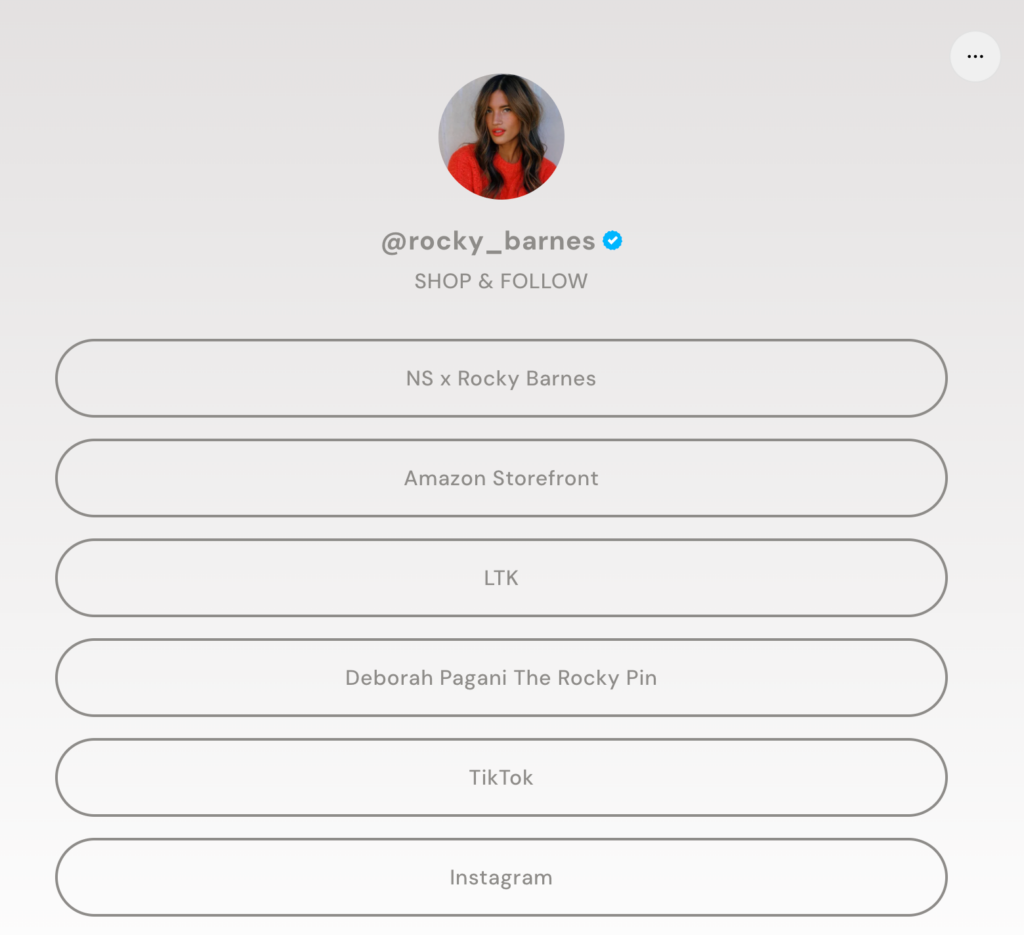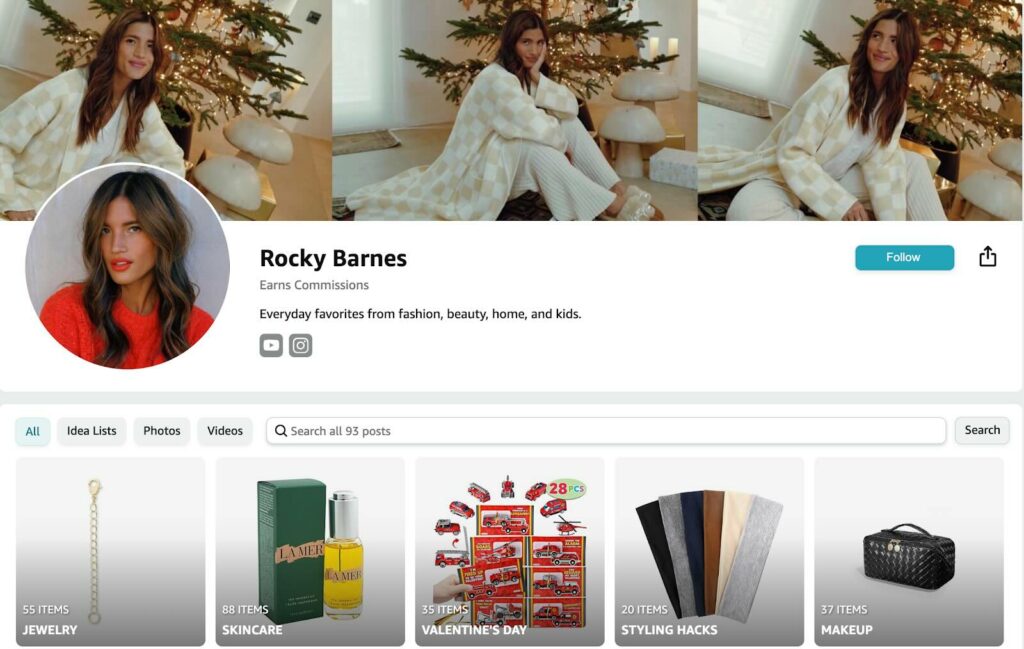
When you launch a new Ecommerce website, it can be challenging to compete with big name retailers, especially if you’re working with a new business. Fortunately, growing your audience and turning them into paying customers is possible with the right SEO efforts in place.
For instance, On The Map took Filter King’s website visitor count from single digits to nearly 500 in the first year.
The secret? Employing the right link-building strategies.
Today, Filter King has almost 50,000 monthly visitors thanks to high-quality backlinks via guest posting, digital PR, and other link-building techniques.
If you’re eager to learn how to utilize these strategies effectively, read on to discover how you can boost your search engine visibility, online store traffic, and most importantly, your conversion rates.
What is link-building, and why does your Ecommerce website need it?
Ecommerce link-building is about acquiring hyperlinks from other websites that lead to your own page. Essentially, the more high-quality links you have out there, the better chance you get of increasing page views that may eventually become conversions or paying customers.
The impact of links on your search rankings
Search engines like Google look at various factors when determining a website’s ranking. Aside from conducting an SEO audit, ensuring you have quality backlinks from relevant and reputable pages is vital as links play a part in how your site is rated. These links will make your content credible and valuable, sufficiently earning you a spot higher in search results.
The success of Ecommerce sites, like every other website that wants to boost traffic, needs backlinks. Aside from increasing views and credibility, they are a great way to enhance brand visibility for the long term, even after a campaign or posting date.
At the end of the day, link-building can greatly impact your search rankings. Think of upward trends in your numbers. You get better indexing in search engines while capturing a growing audience who are already interested in your products and can ultimately have long-lasting partnerships for future collaborations.
That’s provided that you employ the right strategies.
7 Proven Link-Building Strategies for Ecommerce Websites
1. Create Citable content
Creating irresistible link-worthy content that others eagerly link to is a guaranteed way to win valuable backlinks to your Ecommerce website. Such resources, often called link magnets, could take many forms. Let’s look into some examples below.
- Original research posts are an incredibly valuable SEO strategy for citable content. Not only are they unique, but research can establish your site as an authority for the topics you discuss, so long as your findings are conducted well with new insights. It’s great for earning high-quality backlinks since many can cite this, whether it’s through another Ecommerce website, news platforms, or even social media platforms.
- Case studies on a recent project you’ve done, for instance, is a great way to demonstrate your expertise while keeping your content original. You can show practical applications of your products or services while providing more thorough information that other brands in the industry might find valuable and eventually link back to.
- User guides are another alternative for link-worthy content. This type of content takes audiences through step-by-step instructions or shares information about a product or service, which can greatly contribute to establishing you as an authority and expert on your chosen subject.
Case study
Let’s take a look at Hubspot’s research on each generation’s consumer trends. The purpose of the report looks into what different age groups prioritize when making a purchase.
Who can learn from this? Marketers, agencies, and retail businesses of every size.
What’s more, because this post was made public, it’s free for everyone to access and use as a reliable resource. This can easily be cited as a source when other sites are creating content and need references.
Their results
As a result of their effort in creating citable content, HubSpot garnered backlinks from 540 different websites, indicating the high value and relevance of their content. Additionally, this strategy helped them in ranking for 753 different keywords.
Application
Let’s dive deeper into this strategy. Say you run an Ecommerce site like an online pawn shop. The holiday season is coming up, and you’re planning something special for your online shoppers. To better understand their needs and preferences, consider running a survey campaign. This can be a valuable tool for gathering insights to shape your holiday promotions and offerings.
You can then use the findings from your own research as shareable content to build traffic back to your page.
Tools to use
- SurveyMonkey: User-friendly and versatile for creating different types of questionnaires
- Google Forms: A free and easy option for survey creation and distribution
- Typeform: Excellent for creating engaging, visually appealing surveys
Promote your survey through your website, email newsletters, email outreach, and social media channels to encourage broad participation. Offering a small incentive, such as a discount code or entry into a holiday giveaway, can significantly increase the response rate.
Achieving a target of, say, 3000 responses will not only provide you with a rich set of data to inform your holiday strategy but also demonstrate a strong engagement with your customer base.
Once responses are collected, compiling and analyzing the data is the next crucial step. Transforming this data into visually appealing formats. Infographics, charts, or interactive visuals can make your findings more engaging and instantly shareable.
This approach not only makes the data easier to understand but also turns it into compelling link bait. Well-presented survey results can attract backlinks from other websites, bloggers, and industry influencers who find your insights valuable and relevant to their audiences.
2. Conduct digital PR
Digital public relations (PR) uses PR techniques to gain visibility through branded links. While traditional public relations are seen in content formats such as printed magazines, broadcasting, and events, digital PR is seen on online publications and platforms.
How it works
Reaching out and engaging with journalists, bloggers, and influencers is the first step to initiating digital PR. Approaching these publications can build brand awareness and reputation and help you acquire high-quality backlinks.
There are different types of digital PR to work with; each has its own intent.
- PR link-building utilizes PR techniques to link back to your website through guest posts, news articles, and podcasts.
- Social media PR, for instance, can initiate conversation and build hype around your brand.
- Press releases for important company announcements, product launches, or event coverages.
- Influencer partnerships allow you to collaborate with individuals who can reach a larger audience to boost your visibility.
Case study
Let’s read into Icelandair’s success in using digital PR tactics to boost visibility in the midst of the pandemic. The airline partnered with an agency to maximize organic SEO performance with link-building for US and UK markets.
The team utilized a mix of growth campaigns and flexible link-building by tapping journalists they knew would be interested in their content. Their campaigns used evergreen topics, encouraging readers to build and accomplish a bucket list for post-lockdown travel.
Their results
Icelandair saw over 200% increase in organic revenue in the US market. Their visibility for priority keywords also went up along with growth, page rankings, and keyword rankings.
In the UK market, they saw a smaller but still significant growth in organic revenue of over 100%.
3. Get your product mentioned in listicles
Listicles are articles that provide helpful lists for specific topics, which can be especially useful if audiences are looking for product or brand comparisons. These types of content are usually an easy read, which also makes them highly shareable.
When your product is featured in a listicle, you’re hitting two birds with one stone. A valuable backlink for your website plus putting your product in front of people who are ready to purchase. This increases the chance of your product being bought.
Additionally, if you find Ecommerce websites with existing relevant blog posts with broken links, you can try broken link-building by suggesting your product or content as an alternative.
How it works
Getting your products mentioned in a listicle requires outreach and relationship-building to get potential brands aware of the value your product provides. Starting with finding the most relevant publications to your target audiences can impact your traffic.
Once you know what content the publication shares, you can pitch your product to editors or writers who develop the listicles. PR connections can help you get a leg up when contacting brands.
Application
For example, if you have a jewelry store, you can look for listicles that cater to fashion enthusiasts and jewelry lovers. To find these listicles, you can use specific search terms in Google.
Here are some examples of search terms you could use:
- “trending jewelry pieces 2024”
- “best fashion accessories this year”
- “top 10 stylish necklaces for 2024”
- “must-have bracelets for fashion lovers”
- “Best jewelry gift for women”
Once you find websites that regularly create listicles related to your product, you can reach out to their editors. Often, they’ll have contact or collaborator pages where you can make requests or pitch ideas for articles.
Pro tip: To speed up the finding process use our blog post finder tool to automatically find blog posts relevant to your search query.
DOWNLOAD & MAKE A COPY OF THE FREE BLOG POST FINDER TOOL
4. Acquire unlinked brand mentions
Unlinked brand mentions are online references or citations of your brand on other websites that don’t link to your site. One instance you might come across is a quote from your CEO or a product mention. These can easily be converted into real backlinks: all you have to do is ask (nicely).
This link-building strategy is particularly effective for brands that have already established their names, as they are more likely to be mentioned across various websites.
Case study
This blog, for example, has mentioned an Ecommerce site like AliExpress 53 times in their write-up but hasn’t linked to the tool. So, if you were AliExpress, you can check for the publisher’s contact and reach out to ask (nicely) if they’d consider linking to your homepage or tools you offer.
Application
One way to find unlinked mentions and turn them into actual quality links is to use tools like Ahrefs Content Explorer.
To use it, open Ahrefs Content Explorer and search your brand name, excluding your domain. For example “Aliexpress” -site:aliexpress.com.
A total of over 8 million mentions is a lot. You can break this down and prioritize links from high-quality pages by adding filters.
Some helpful filters you can use are:
- Domain rating (DR) of 30 or more
- Website traffic of 1000 plus, only live links
- English
- One page per domain
- Exclude home pages
Once you have your list, export as a CSV or Excel file. Not all of these pages may contain unliked brand mentions so you can double-check it by using our free “Brand Mention Checker”.
You can then contact the article’s author or website administrator to ask for a link. There are tools like Apollo.io and Hunter.io that can speed up contact research.
Here’s a short and straight template you could use.
Hi {{First_name}},
I was reading your article, “{{Article Title/Link}},” earlier and noticed that {{Your Brand Name}} was mentioned. It’s great to see our brand featured on your page.
While calling out {{Your Brand Name}} is helpful, it currently lacks a direct link to our site. Adding a link could provide your readers easier access to more information about {{Your Brand/Product/Service}}, and enhance their experience.
As a token of our appreciation, we’re also ready to feature your article on our social media channels, increasing its visibility.
Thank you for considering this opportunity.
Best regards,
{{Signature}}
5. Engage in Link Partnerships
Another off-page SEO strategy for Ecommerce you can try is link partnerships. This allows you to trade links with relevant website owners to benefit both brands. Ideally, audiences from each partner can overlap to build a bigger customer base.
How it works
To kick off a link partnership, you’ll want to find a website or brand in your industry or niche that complements your business. Check to see if they have a similar or higher domain authority.
Once you’ve decided on the brands to partner with, reach out with a personalized message and propose your idea that involves trading backlinks. You can be creative with this collaboration. Think of guest blogging, co-creating content, exchanging products for linked reviews, or even creating full campaigns together.
When creating content, you can monitor backlinks to ensure they work as intended.
Case study
Let’s look at a big success story. In 2017, AirBnB partnered with Flipboard, a social magazine app. The campaign goal was to acquire more users for the vacation rental app through Flipboard’s readership. The partnership was brand fit, where Flipboard enables readers to enjoy their passions with content, and AirBnB creates experiences for travelers.
AirBnB created a US campaign driving traffic to Flipboard to kick off the campaign, using targeted emails, social push notifications, display and video ads. Once in the app, readers would find AirBnB Experience Magazines made of storyboards, encouraging readers to immerse in their passion for travel.
Readers on Flipboard could “heart” the AirBnB experience being promoted in the content to get the chance to win a free trip. They could then access AirBnB’s website through a link to explore their preferred experience.
Their results
The campaign hit over 39M targeted impressions, which included existing and new users. The magazines within Flipboard gained 440,000 viewers who joined in “hearting” the experiences. AirBnB also gained 38,000 visits to their page with a 9% CTR of total viewers.
Application
Prioritizing quality over quantity is key to attracting better traffic. Focus on providing real value to all audiences. It also pays to be honest and polite in all your interactions.
Here are some link-building slack groups you can join for free:
6. Open up affiliate marketing
Combining SEO with affiliate marketing enables website owners and influencers with niche followings relevant to your brand to promote your products. These programs can drive sales and natural backlinks from promotions via websites, blogs, and social media platforms.
How it works
Using SEO practices for affiliate marketing helps content rank higher in search engine results, effectively boosting visibility and traffic to your site. Ensuring the affiliate content targets the right keywords related to your products or services can ensure you attract the right purchases.
To get this started, you give each affiliate a unique link and relevant keywords to share with their audiences. When people buy through the links or codes your affiliates share, the affiliates earn a commission.
You must establish an affiliate program with rules protecting both parties’ interests. This can include the commission rates and dates of when they might post.
Case study
Let’s take a look at Amazon’s affiliate program. They outline all the rules in detail, including how much affiliates get paid, and give them any necessary tools for marketing your products.
When your affiliate program is ready, you can reach out to relevant influencers in your industry. When they join, share their special trackable links or codes to their social media, blogs, or videos. These links lead their followers to your website, which is how you earn extra backlinks.
When a customer clicks on a specific affiliate’s link and purchases your product through it, that particular affiliate earns a commission.
Application
Looking at influencer Rocky Barnes, who has 3.4M followers on Instagram alone. Aside from her social media platforms, she has her own blog for followers to get a glimpse of her life, which also links back to the lifestyle products she uses.
She provides a linktree link in her bio, sharing her Amazon storefront among other affiliates to promote the Ecommerce sites.
On Rocky’s storefront, audiences can find the different products she purchases through Amazon, which they can buy directly from the site.
Best practices for your Ecommerce link-building strategy
- Look out for new opportunities with backlink gap analysis. There may be new opportunities for your site that you might be missing out on.
- Cultivate relationships with partners. Every link-building outreach message is an opportunity to foster long-term partnerships.
- Don’t be weird, creepy, or pushy in your outreach efforts. You’ll want to be nice and polite with every interaction to encourage partners to collaborate again later.
- Quality over quantity matters. Audiences can spot whether the content is authentic and actually informative. This will get you the traffic you need from the audiences you’re actually targeting.
- Audit and monitor progress with partners. Keeping track of new and lost links regularly will help minimize the amount of work you’ll have to do later.
- Stay updated on recent developments in the field. There will always be new tools to help you find outreach opportunities or monitor inbound links effectively.
Conclusion
There are many ways you can go about link-building efforts for Ecommerce. Ensuring your site has a strong backlink profile will help you rank higher on search engine results to attract new customers.
Link-building tactics can be effective if you are proactive, polite, and persistent in acquiring relevant backlinks. This can include producing your content, diligently monitoring mentions, offering guest posts, and proposing external links from other authoritative websites to your home and product pages.
In any case, always remember to focus on quality over quantity to find success in your Ecommerce link-building strategies. It’s always better to earn one quality backlink from a reputable website instead of getting ten backlinks all from spammy sites that search engines could penalize any day now. Finally, don’t forget to audit and monitor your progress over time to identify areas where you need to improve your link profile and adjust your link-building tactics accordingly.
